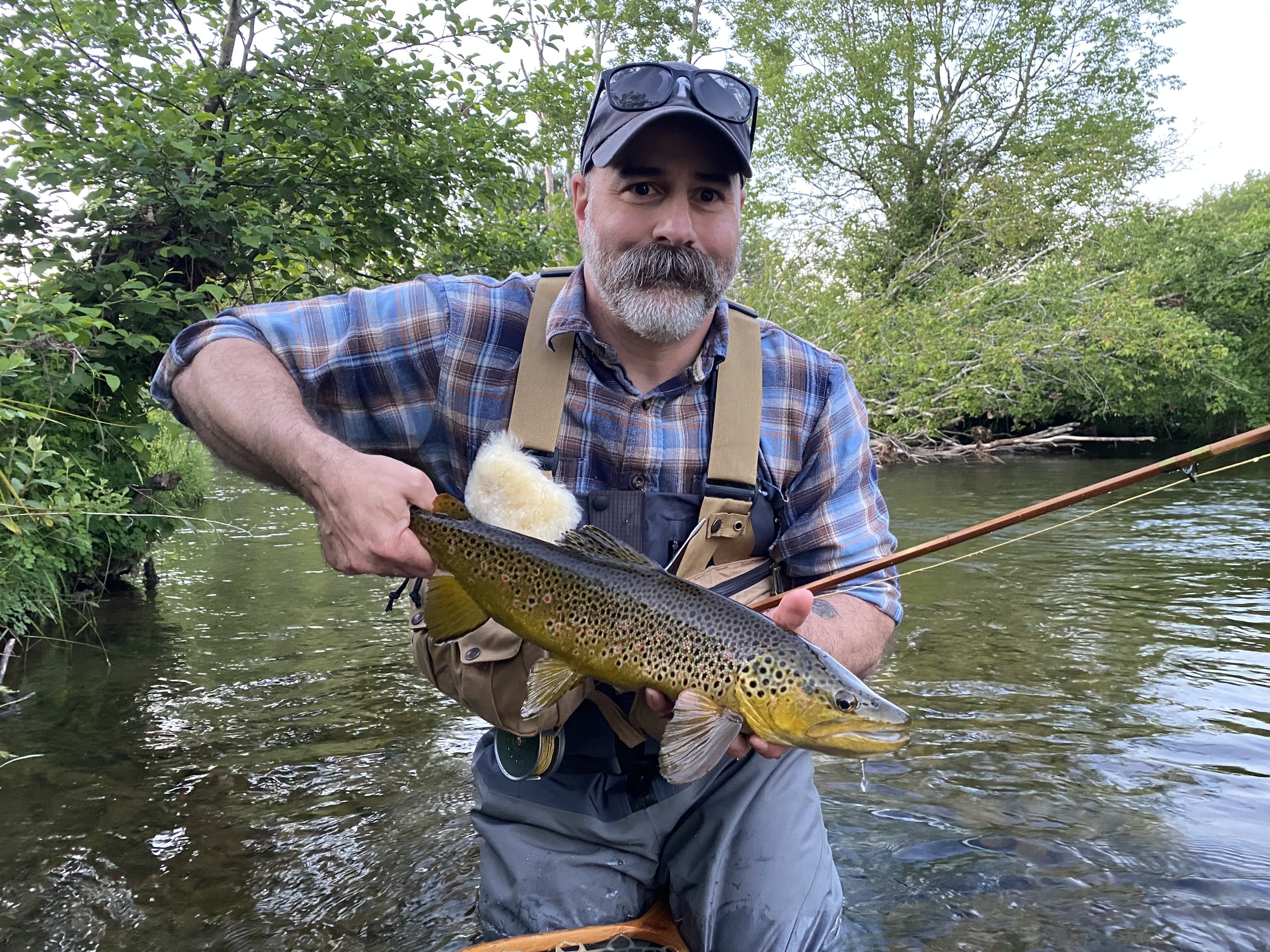
Seth Cavarretta
1. Choice of equipment Rods, reels, fly lines, fly floatants, clothes, glasses, and other useful items.
I own a variety of rod and reel combos for different applications on the river. My go to dry fly rod for most of my fishing is a 8ft 5 weight bamboo rod made by a Pennsylvania maker named Anthony Pagley, paired with a Hardy 3 ⅛ wide spool perfect with a Wulff bamboo special fly line. My flies are pre treated with scotch guard but on the water I will use high and dry shake desiccant. The clothes are usually any shirt that has sun protection and quick drying. For the early season a good base layer and wool socks will do. Polarized glasses are a must have with amber or low light lenses are preferred. Useful items to have are an amadou patch and a mitten scissor clamp because it combines several tools in one and is less stuff to carry on the water.
2. Leader material, build-up, length and knots.
A hand tied dry fly leader using maxima chameleon starting with the butt section around 30 pound tapering down to 8 pound. Ending with 4x or 5x overall length is 14 to 15ft conditions depending. Knots are tied with triple surgeons and an improved clinch knot to tie on the fly.
3. Approach and stealth.
Everything you need to know about approaching the water can be learned by observing the heron. The birds slow steady deliberate approach with no sudden movements and trying not to disturb the water and letting the rings dissipate before taking your next step is good practice; especially in slower pools. In small streams, you want to use your terrain for cover and concealment when approaching the creek. Faster or broken water your movement will be masked and is not as critical. If rules permit the use of felt soled boots is preferred for traction and stealth. The use of studs while dry fly fishing slow pools is not recommended as the scrapping sound on the rocks could disturb the fish.
4. Reading the water.
When you arrive on the water, I find it best to sit back and observe the situation. You want to look for bubble lines, structure and potential insects that are on the water. The trout are more likely to be in areas in slower water, behind structures, undercut banks and eddies where the current acts as a conveyor belt bring the food to them, allowing the fish to conserve energy. I typically wont enter the river unless there is a steady fish feeding that i can target rather than casting blindly. There are times that you wait for it to happen and it never does.
5. Casting ability which casts are essential.
My casting ability is proficient and I can get my fly where it needs to be but I am not a professional caster. The standard basic overhand cast is most used. The reach cast or air mend is important for dry fly fishing on the majority of the water in the Catskills. The roll cast is also a good tool in situations were a back cast isn’t feasible. The double haul for saltwater fishing and larger rivers like the Delaware can be useful where more distance is needed and or wind/ bigger flies are encountered.
6. Entomology, what should we know?
Im no scientist but a good working knowledge of the local insects is an absolute must.
7. Rise forms Can they tell us something?
Rise forms can tell you a lot about what stage of the insects life cycle that the trout is keying in on.
8. Fly selection, Size, shape, materials, which flies are essential.
In my fly box I always keep the Atherton series of flies (one through seven) because they have an impressionist style with graduating shades from light to dark in size 10- 16 will approximate most insects you will find throughout the entire season. These coupled with a few other essentials patterns like the rusty spinner, a few elk hair caddis and a Dun Variant are always in my box.
9. Presentation and drifts.
A downstream approach with a reach cast is standard for the Catskills rivers as the fish are highly pressured and need to see the fly first. Any line or leader going over them will likely put them down.
10. Upstream or downstream?
A downstream cast is going to be the standard while certain circumstances like small streams or where you don't have a backcast upstream presentation will be necessary.
11. Fighting fish.
Fight them hard and always be in control of the situation, getting downstream of the fish can be helpful for landing larger trout. Land them quickly and try to keep them in the water to minimize your impact.



